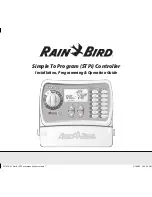
Programming
10.9 Arithmetic parameters, LUD and PLC variables
Cylindrical grinding
Programming and Operating Manual, 07/2009, 6FC5398-4CP10-2BA0
307
;(8 decimal places, arithmetic sign and decimal point)
or
;Exponential notation: ± (10 to power of -300 ... 10 to
power of +300)
DEF STRING[string length]
varname41
; STRING type, [string length]: Maximum number of
characters
Each data type requires its own program line. However, several variables of the same type
can be defined in one line.
Example:
DEF INT PVAR1, PVAR2, PVAR3=12, PVAR4
;4 type INT variables
Example for STRING type with assignment:
DEF STRING[12] PVAR="Hello"
; Define variable PVAR with a maximum of
12 characters and assign string "Hello"
Fields
In addition to the individual variables, one or two-dimensional fields of variables of these data
types can also be defined:
DEF INT PVAR5[n]
;One-dimensional field, type INT, n: integer
DEF INT PVAR6[n,m]
;Two-dimensional field, type INT, n, m: integer
Example:
DEF INT PVAR7[3]
;Field with 3 elements of the type INT
Within the program, the individual field elements can be reached via the field index and can
be treated like individual variables. The field index runs from 0 to a small number of the
elements.
Example:
N10 PVAR7[2]=24
;The third field element (with index 2) is assigned
the value 24.
Value assignment for field with SET instruction:
N20 PVAR5[2]=SET(1,2,3)
;After the 3rd field element, different values are
assigned.
Value assignment for field with REP instruction:
N20 PVAR7[4]=REP(2)
;After field element [4] - all are assigned the same
value, here 2.
















































